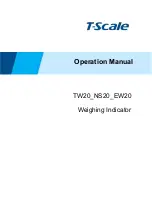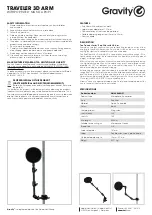
Sarasota 200 Ultrasonic Multipath
Flowmeter
Section 1 INTRODUCTION Page 1-6
Thermo Fisher Scientific
INTRODUCTION
H
min
=
27
√
(
L /
ƒ )
1.2.6 Path
configurations
The simplest arrangement is to have a number of paths
“
in line” above each other. This
would be suitable for a channel of regular cross section shape, which is straight for a long
distance compared with its width (5 to 10 times).
Other configurations are often used in other circumstances. For example:
•
Crossed paths where there is uncertainty about the flow direction
•
Sloping paths where the depth is greater on one side compared with the other
•
Transducers inset from the banks
•
Reflected paths where transducers are on one side only and reflectors “bounce” the
sound pulses back from the far side. This method saves cable but increases path lengths
and is very sensitive to misalignment.
The Sarasota 200 flowmeter is capable of being configured for these and other situations.
For more complex configurations requiring more than 4 paths or compound channels, the
Sarasota 2000 offers more flexibility. Examples are:
•
Multiple sets of paths for compound channel shapes
•
V configuration used to divide the width because of size or uneven profile
•
Multiple
channels
Please consult Thermo Fisher Scientific for examples and advice.
1.2.7 Transducer frequency
Transducers are manufactured with characteristic frequencies. These are in the range 1 MHz
to 250 kHz. For propagation reasons, the greater the path lengths the lower the frequency
and the larger the transducer. As a guide, path lengths below 10 metres would use 1MHz
transducers, 5 to 80 metres 500 kHz, 50 to 200 metres 250 kHz. These figures are for
guidance and the selection may be influenced by other factors relating to the application.
Where there is overlap, lower frequency transducers may be used to improve penetration in
conditions of high suspended solids provided there is sufficient depth and velocity.
Please consult Thermo Fisher Scientific for advice.
1.2.8 Minimum
depth
of
water
In order to avoid reflections from the bed or surface causing distortion of the ultrasonic
signals, a minimum height of water is necessary above each path. This depends on the
transducer frequency and the path length.
Where:
H
min
is the minimum height of water above the path, in metres
L
is the path length, in metres
ƒ
is the transducer frequency, in Hertz
A similar restriction applies to the channel bed, particularly if it is smooth and reflects rather
than absorbs an acoustic signal. The minimum depth of water is therefore usually 2 x
H
min
Summary of Contents for HB-S200
Page 2: ......
Page 3: ...Sarasota 200 Ultrasonic Multipath Flowmeter User Guide P N HB S200 Revision A ...
Page 4: ......
















































